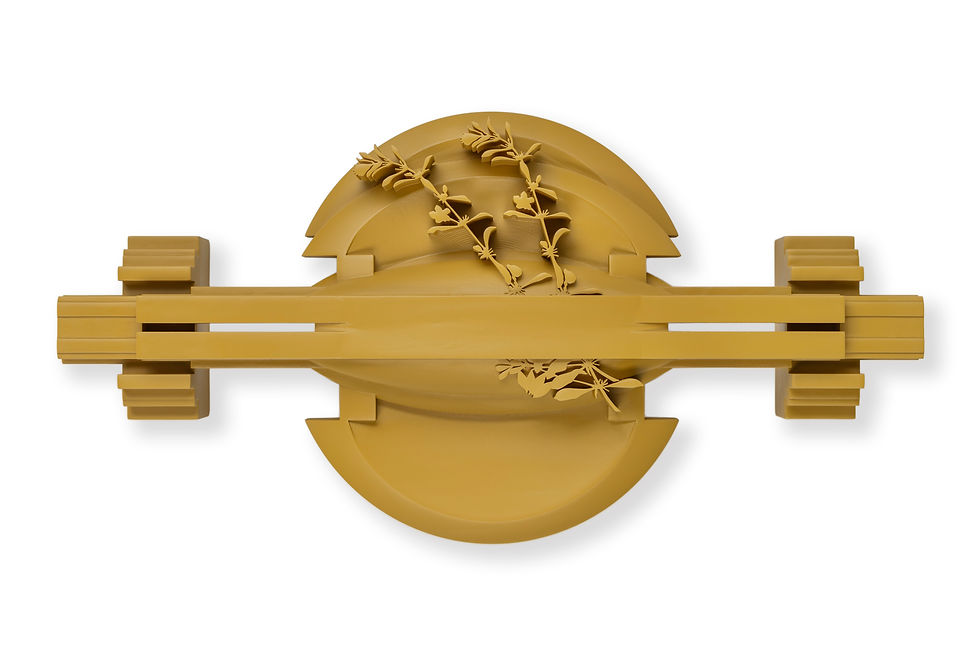Depicting a Post-Apocalyptic World
- The Design Collective

- Apr 10, 2020
- 3 min read
'Critters' by Mustafa Khanbhai
Depicting a post-apocalyptic world populated by species who have adapted to the conditions of the Anthropocene, roaming around in cities reclaimed by the earth.
The blurred line between urban structures and natural habitats need not be seen as abhorrent or violent, but as play and symbiosis of a new kind. The title of this project is borrowed from a term in Donna Haraway's Staying with the Trouble.
"Like a lot of artists over the past century, I have become fascinated by the future, with both hope and doom. Literature in particular has always helped me imagine the ecological future very vividly, so perhaps that had a lot to do with it. Margaret Atwood, Ursula K. Le Guin, Donna Haraway and Anna Tsing among others have had a big impact on how I have been thinking about urban wildlife, about co-existence and about what will remain of us in the ecosystems that we have permanently impacted." says Mustafa when we asked about his inspiration for the project and its title.
These depictions show some of the critters Mustafa has designed for the post-human city. They are machine-born, hybrids and evolutionary reincarnations. The videos that follow, are a ‘documentation’ of them in their unnatural habitats.
Mustafa says "Designing these creatures has been a meandering process, involving research as much as practice. The earlier creatures were modeled on heavy machinery (less research, more fun), but as my interest in mass extinction grew I also referred to genera like the Lystrosaurus, which survived and proliferated after the Permian-Triassic extinction event. Coming to the present day, I have been studying creatures that have adapted to urban areas, like lizards, pigeons, strangler figs, sludge worms, stray dogs etc. These critters and their newly formed ecosystems give my work a field study aspect that I find enjoyably similar to 'traditional' artistic practice, i.e., making live sketches, studies of anatomy, movement and so forth. Most of the research and studies I make on paper culminate in animated characters made in Blender, and in the case of the strangler figs, many many hours of coding as well."
When asked about what the project aimed to achieve, Mustafa interestingly commented "I'm not sure if I had an objective. By this time I have learned to avoid specific long-term goals for projects, because I find that these don't allow for serendipity or growth. I guess what I want to get across to viewers is the sense of horror and wonder that urban critters inspire: admiration for their sense of enterprise, for the variety of co-existences that surround us, but shock at how little of the city is ours, how poorly we have adapted to it."
Post apocalyptic art themes are no longer bound by religious or ideological safeguards and have new and much more imaginative meanings today. Such is the case in this project too. However Mustafa begged to differ, he says "I don't entirely agree. There's always something religious or religion-adjacent about imagining the apocalypse. This is morbidly fascinating to me, that even in our dread there is fervour, a weird excitement about the end of the world. I find this way of thinking entering my work in strange ways: there is a total loss of faith in humanity's ability to survive in the ruins of the Anthropocene, but precisely because of that there is the desire to reintroduce oneself to a deep empathy that is ecological, interpersonal and political. Whether it is building cities to accommodate the creatures in it, becoming sustainable as a species of equals, or dealing with a pandemic, everything I have learned from my research and practice suggests that survival is entirely a function of empathy, because that is our main contribution to the ecosystems around us."
About the Artist: Mustafa Khanbhai
Mustafa is an artist and writer based in Goa. His practice is concerned with the vestiges and reminders from periods of cataclysmic change in human and natural history, as well as the potential fallout from mass extinction and survival in the Anthropocene. He lives and works in Goa, India.










Comments